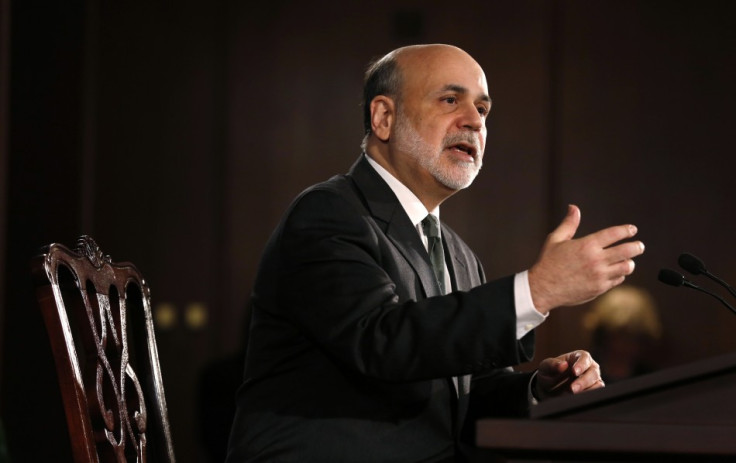US Fed to Keep Benchmark Rates at Near-Zero Levels
Federal Reserve also upsizes its monthly asset-buying programme

The US Federal Reserve has decided to keep the short-term interest rate at near-zero levels until unemployment falls to 6.5 percent or lower, with inflation staying below 2.5 percent.
The central bank also enhanced its multi-billion dollar monthly asset-buying programme in a fresh attempt to repair the US economy, as the country fears a derailing of its recovery due to the fiscal cliff.
Fed Chairman Ben Bernanke has called unemployment an "enormous waste of human and economic potential" as he tied the interest rate to joblessness of the country.
The Federal Reserve Open Market Committee (FOMC) said at its final meeting of 2012 that economic activity and employment had continued improve at a moderate pace recently, apart from weather-related disruptions. Despite a decline to a four-year low of 7.7 percent in November, the unemployment rate remained at "elevated" levels, the FOMC noted.
Changing its prime focus of controlling inflation and concentrating on more job creation, the Fed expects to keep the benchmark interest rate near zero until at least 2015.
The new policy, a major move by the central bank by giving specific numbers for inflation and unemployment rates, has become known as the "Evans Rule". Chicago fed president Charlie Evans had been asking the Fed to sustain its monetary easing until unemployment was 7 percent or core inflation was above 3 percent.
With the move, the FOMC has abandoned its practice of talking about its future policy in terms of the calendar. The new policy outlines that the path of monetary policy will depend on the economy, instead of some arbitrary date.
Bernanke also stressed the need to reach an agreement over the fiscal cliff. In the absence of a compromise on the year end expiration of tax cuts and imposition of spending cuts, "the economy will, I think, go off a cliff," he said.
The FOMC also announced a new treasury bond buyback programme, replacing another asset-buying scheme known as Operation Twist. The new scheme will spend $45bn (€34.4bn, £27.9bn) per month in bond repurchases. Along with the continued third of "quantitative easing", which buys $40bn of mortgage-backed securities per month, the US is now buying a total of $85bn a month in assets through its stimulus programmes.
"Taken together, these actions should maintain downward pressure on long-term interest rates, support mortgage markets, and help to make broader financial conditions more accommodative," the FOMC said.
© Copyright IBTimes 2025. All rights reserved.





















